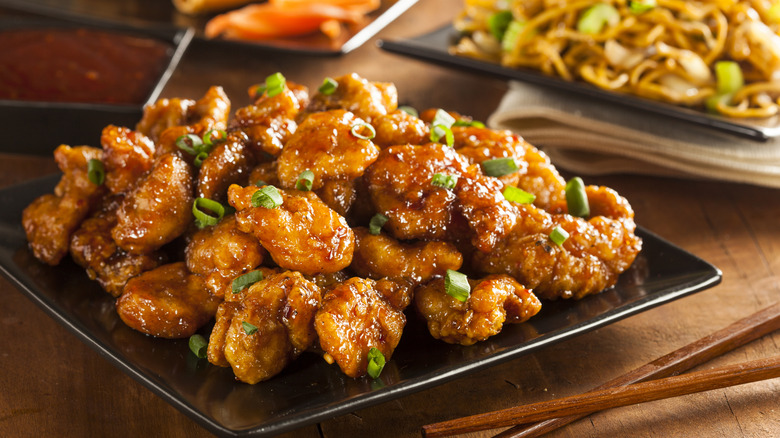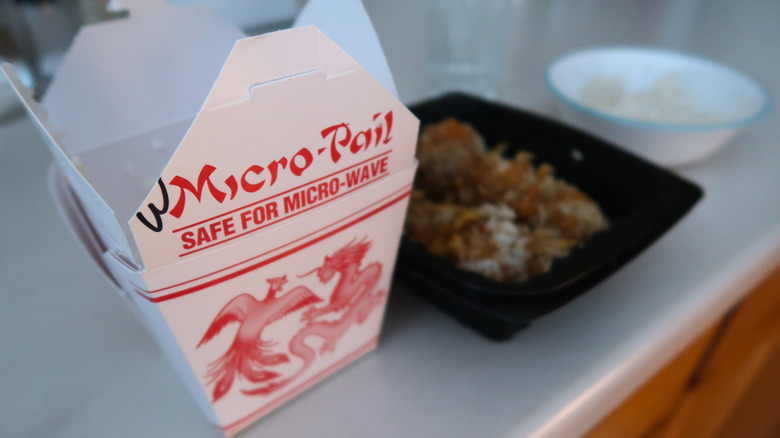The Best Way To Reheat Chinese Leftovers For A Fresh-Tasting Bite
No one ever said the best thing about Chinese takeout is it's salvageability. It's a lip-smacking testament to perfection the night of, but if you're not careful, day two of that Peking duck can be as disastrous as frying bacon with your shirt off. Yet there are a few tried-and-true techniques to eliminate the disappointment from the results of a reheat. Now keep in mind that seconds don't typically eclipse the original, so don't expect "The Dark Knight" here. But a little creativity goes a long way in rejuvenating the savory taste of your leftovers.
Of course, safety is always first to avoid food-borne illnesses. Remember to refrigerate your extra grub within a couple hours to keep any bacterial growth at bay. And whatever method you use, always cook your food thoroughly at 165 degrees Fahrenheit or better.
Believe it or not, the cooldown process can also play a key role in preserving certain kinds of takeaway, namely apps like dim sum or dumplings. Chinese takeout containers are designed to lock heat in during the car ride from the restaurant to your house. It allows residual heat to continue cooking the food even after it's been removed from the heat source. So you might need to remove some of your dishes from the Pagoda cartons and plastic trays to give them time to cool off. Transfer them to a cooking rack and let them chill at room temperature for 15 to 20 minutes before you throw them in the fridge. That prep work sets you up for success when you come home for dinner the next night.
Breathing new life into takeaway
Nothing worse than going in for round two only to bite into white rice that's hard, broccoli that's soggy, rubbery steaks and peppers, and chewy soba noodles. The texture and flavors tend to change once the food cools down and your fried options can dry out while the vegetables lose their tenderness. There are a number of ways to reheat, but cooking oils, soy sauce and broths can be great tools to revive any lost flavor.
Use an air fryer to reheat sweet and sour chicken. Place the pieces in a single layer and cook them at 375 degrees Fahrenheit for five minutes, adding your vegetables halfway through to return both to their crispy state.
You can also air fry your fried appetizers like egg rolls and wontons or just throw them in the oven for a few minutes. Remember to preheat and use parchment paper to limit the mess. And don't be afraid to combine soy sauce with black or rice vinegar, adding a splash of sriracha or chili garlic to infuse some kick into the dipping sauces.
Meanwhile, your recycled fried rice is best suited for a griddle or large skillet on day two. If the grains are really dry, add a tablespoon of broth and warm them over medium heat for a few minutes. Add a dash of soy sauce for taste. Incorporate a wok to stir fry your lo mein and other noodle dishes, whisking them around over medium-high heat with a touch of vinegar, broth and a dollop of oyster sauce. Lastly, raise your chopsticks and enjoy.

